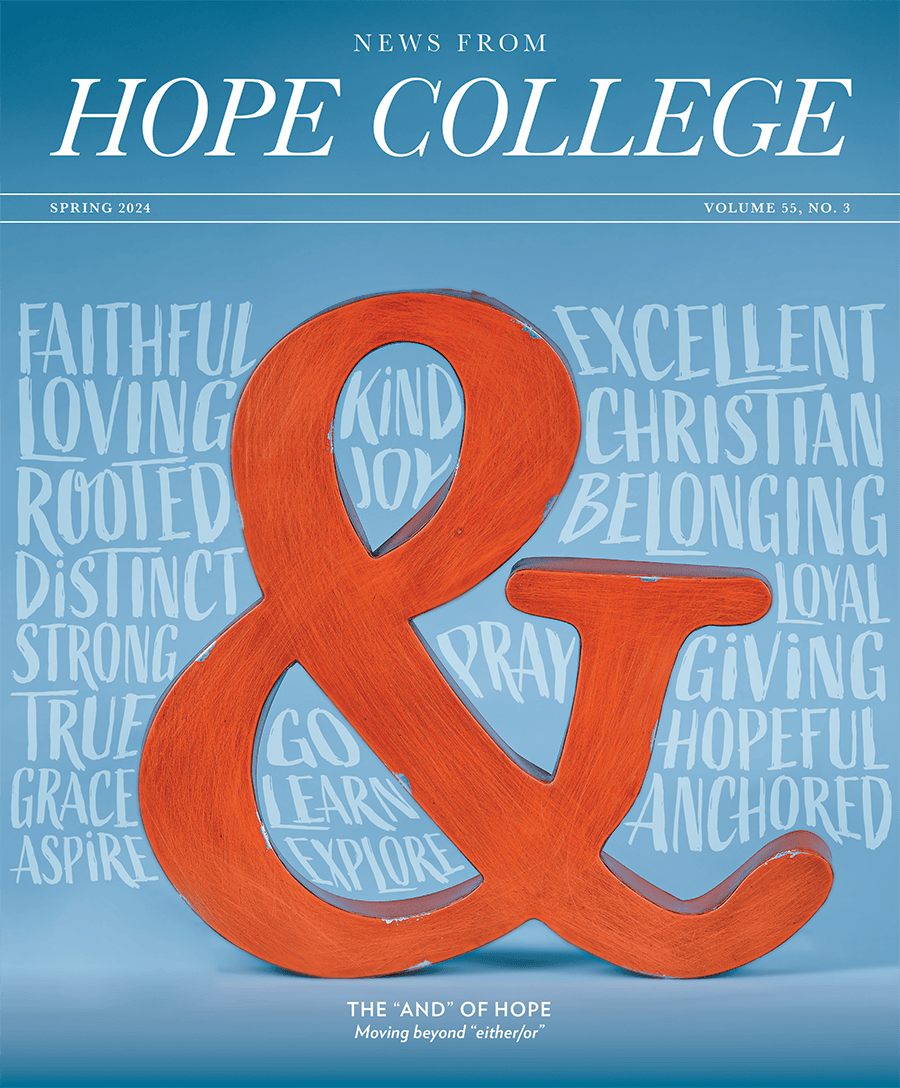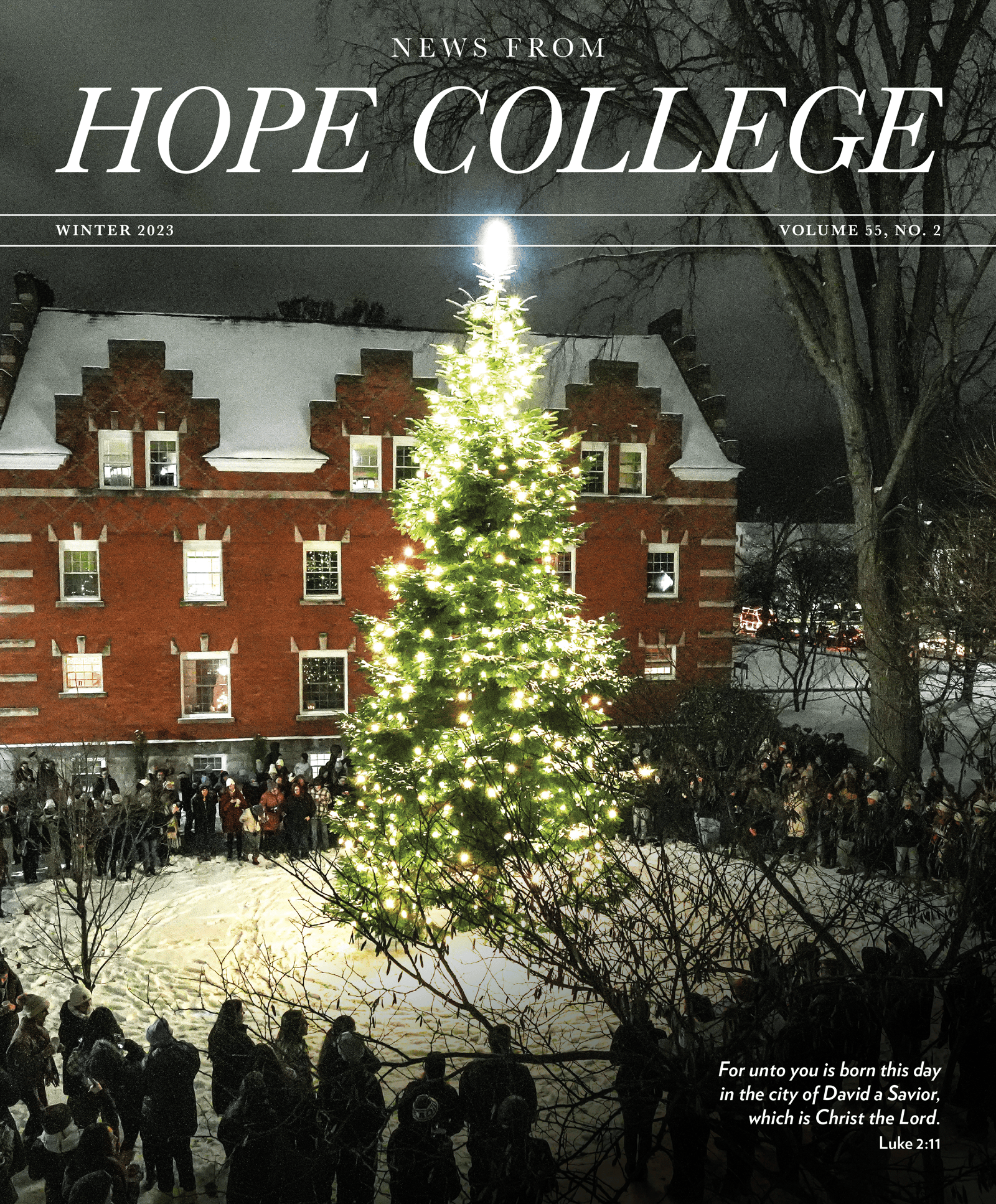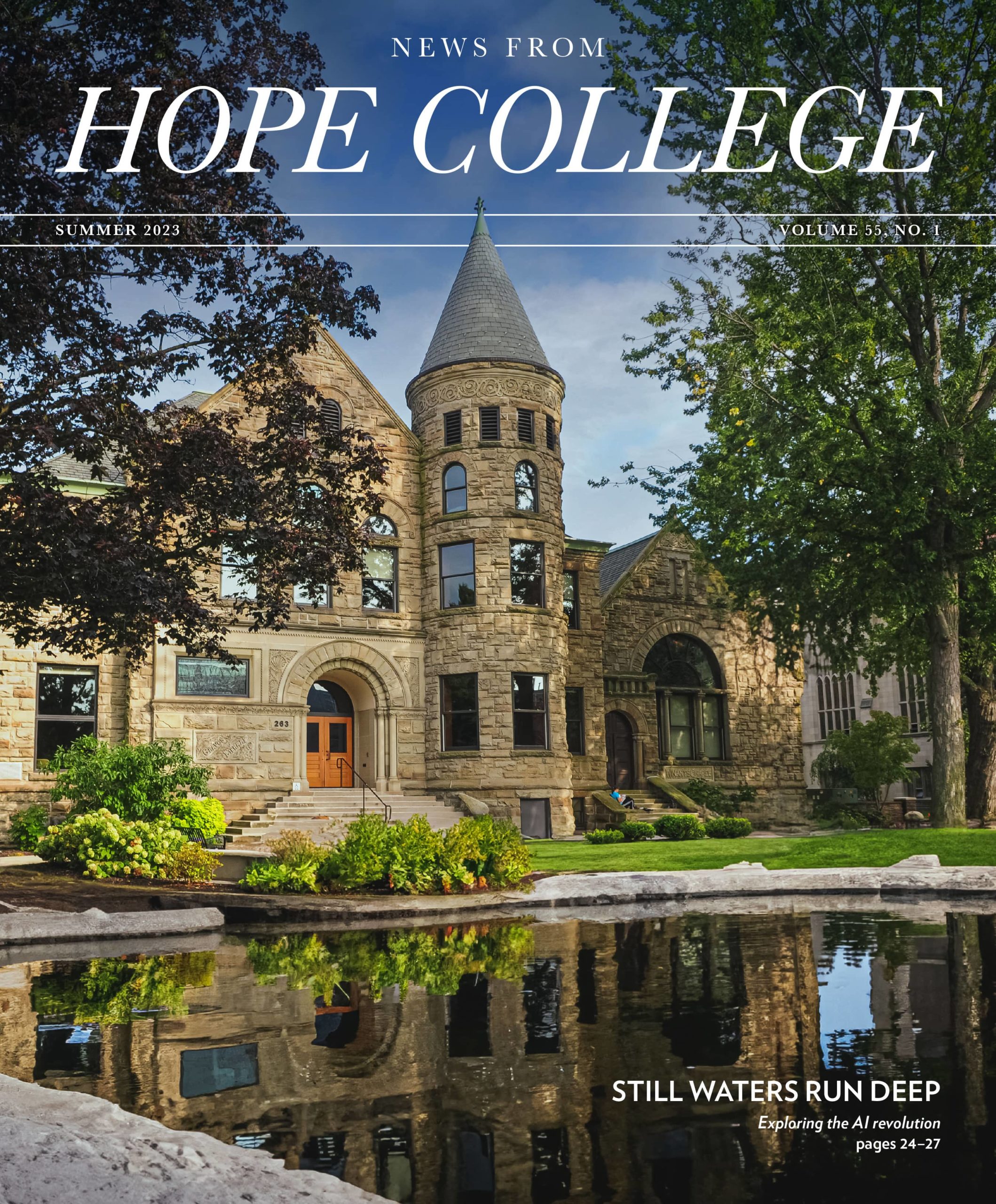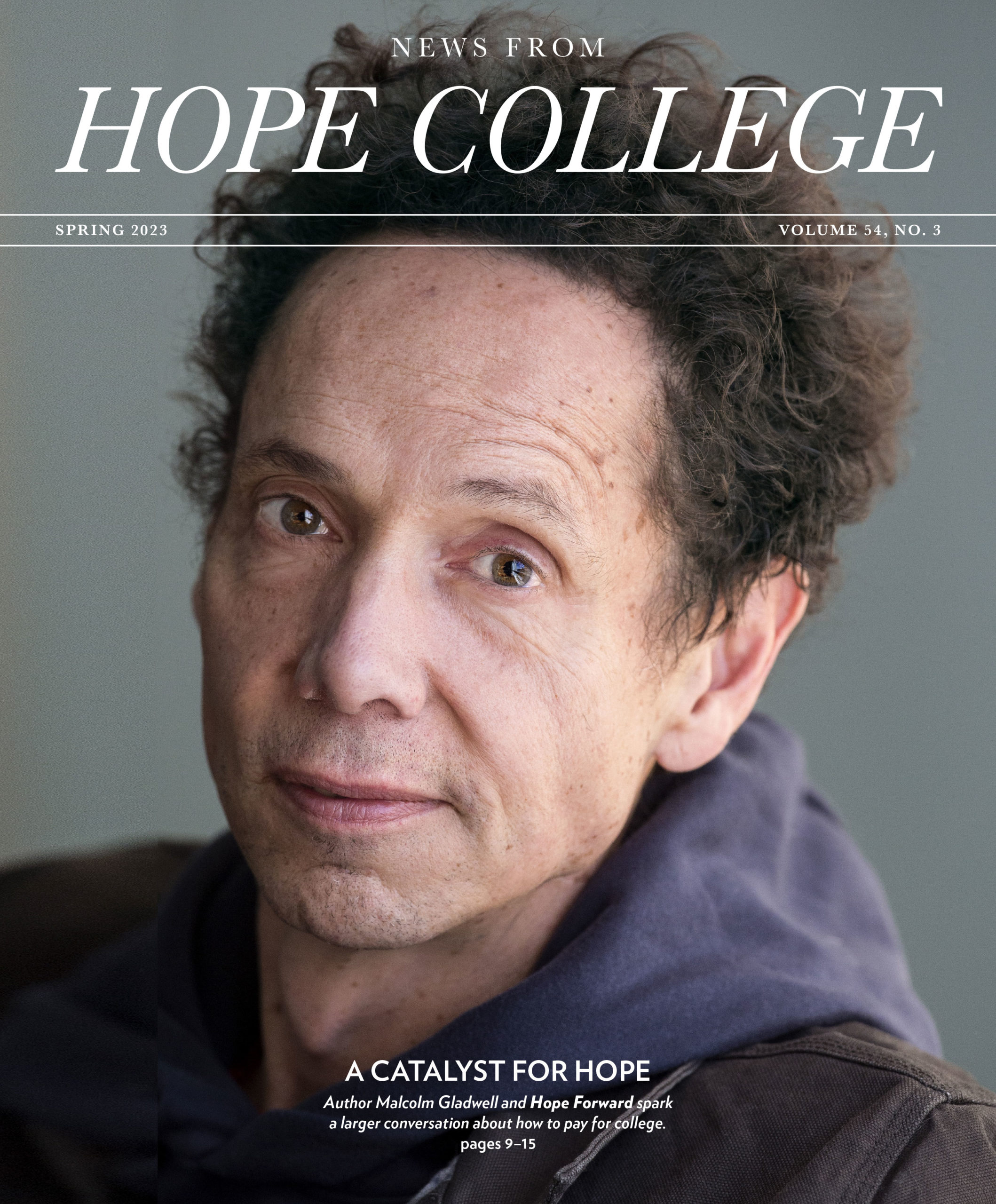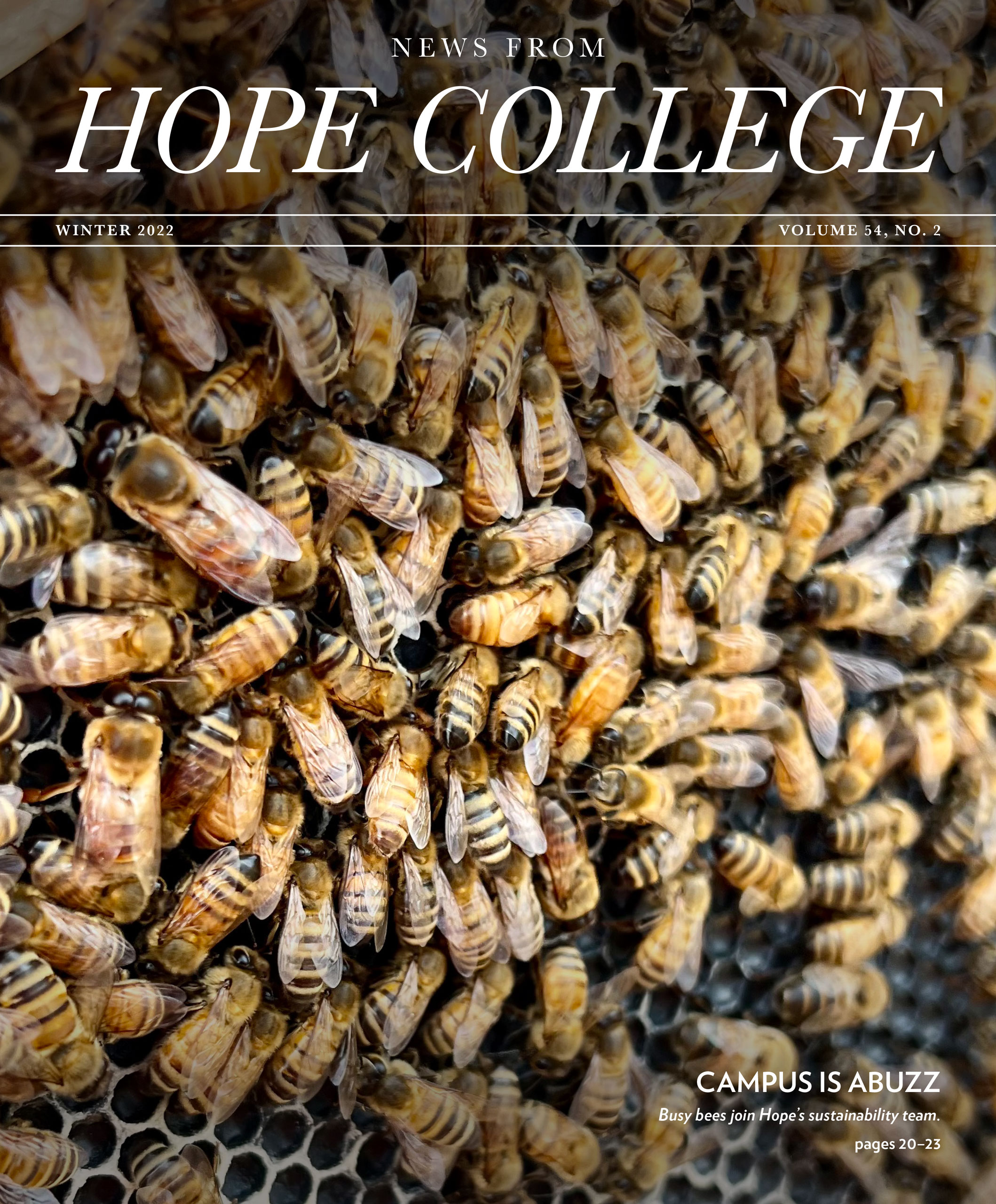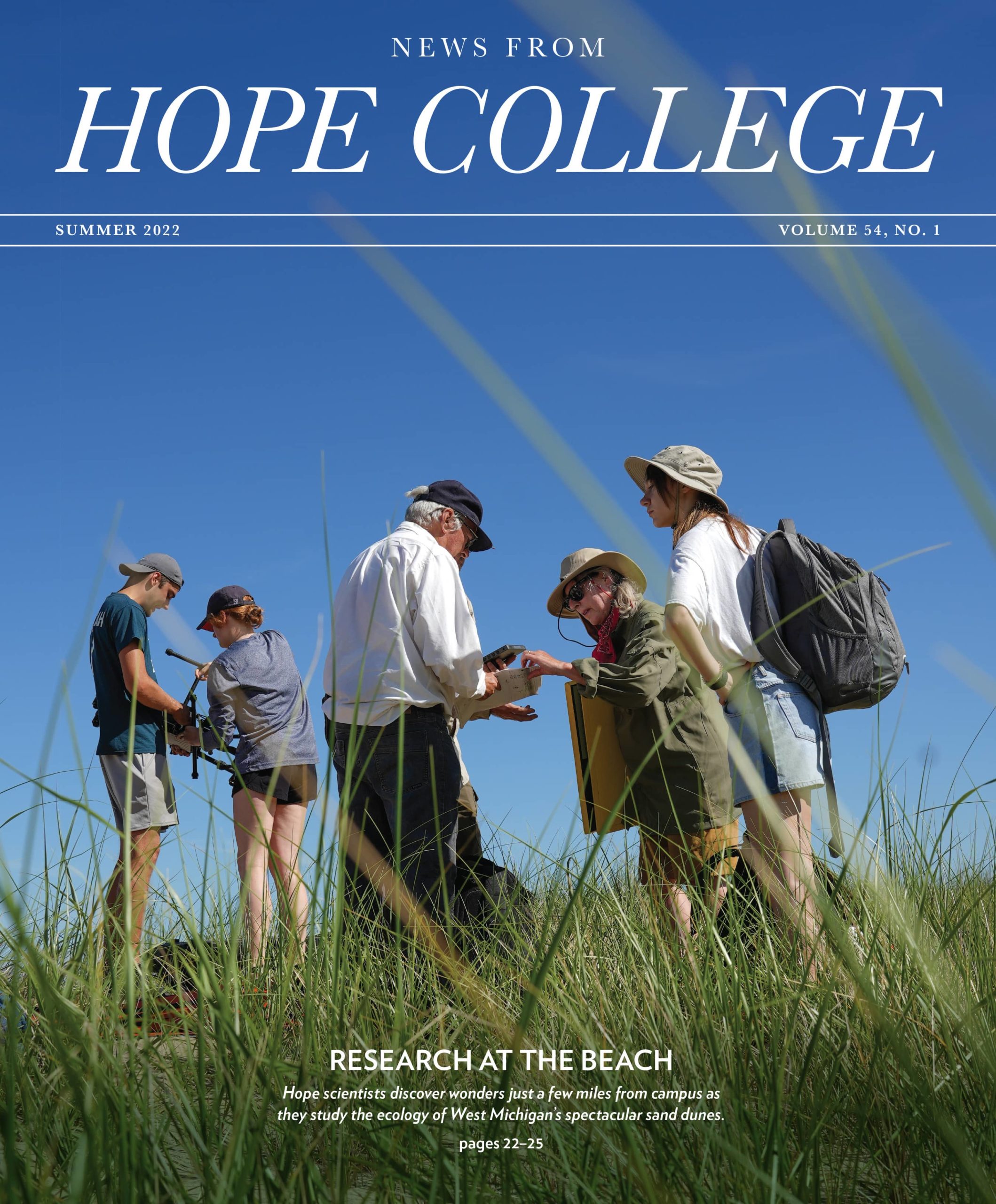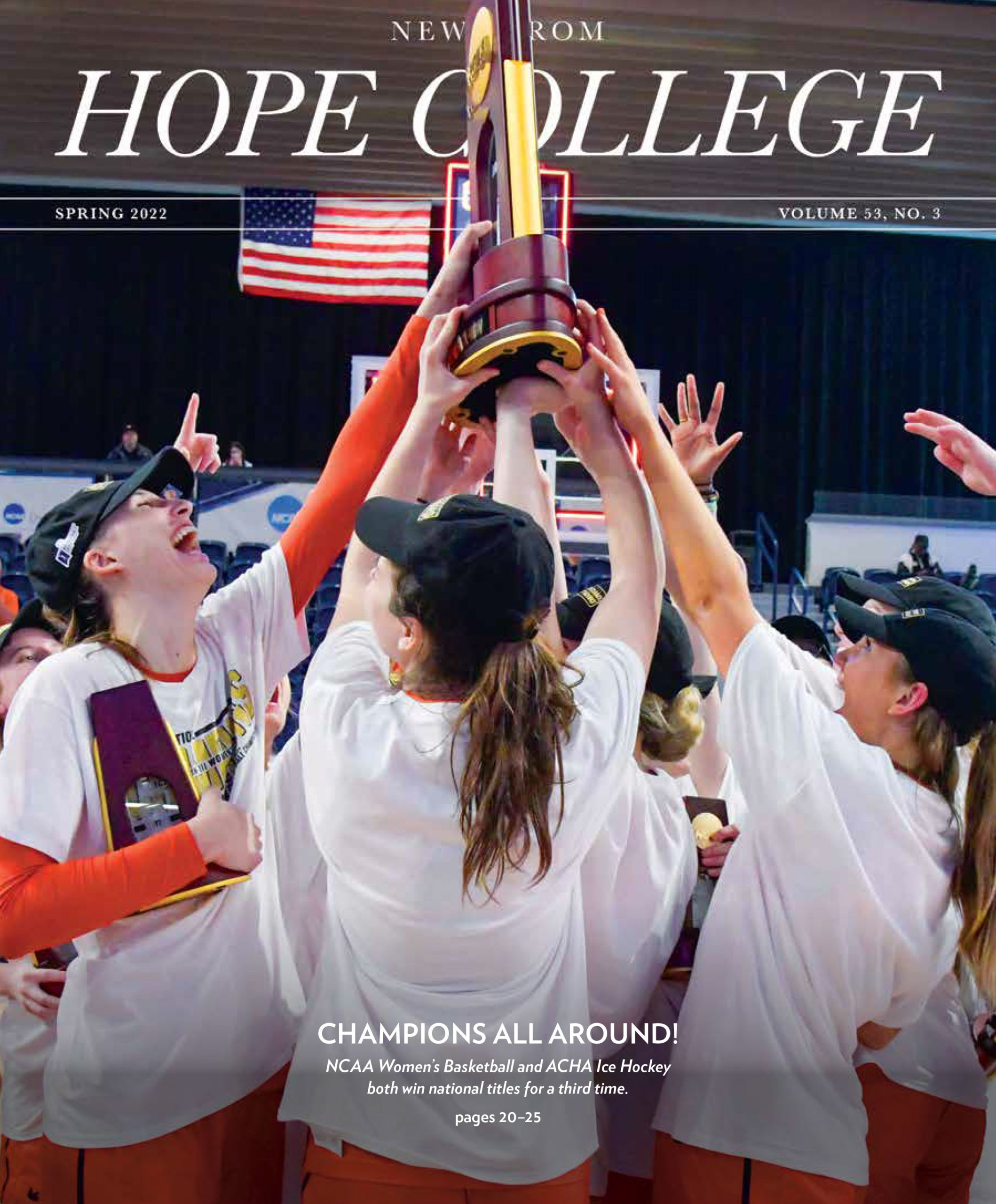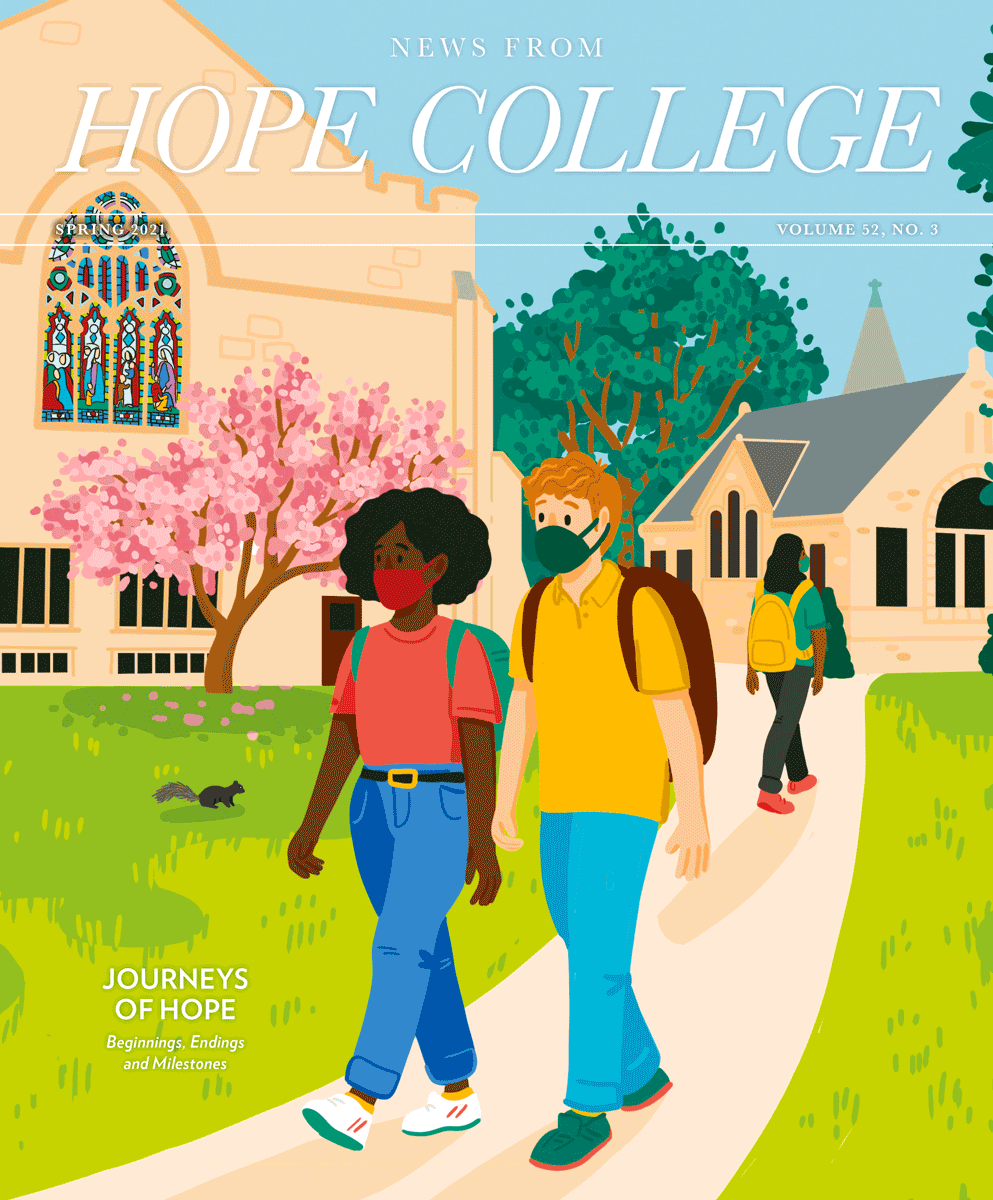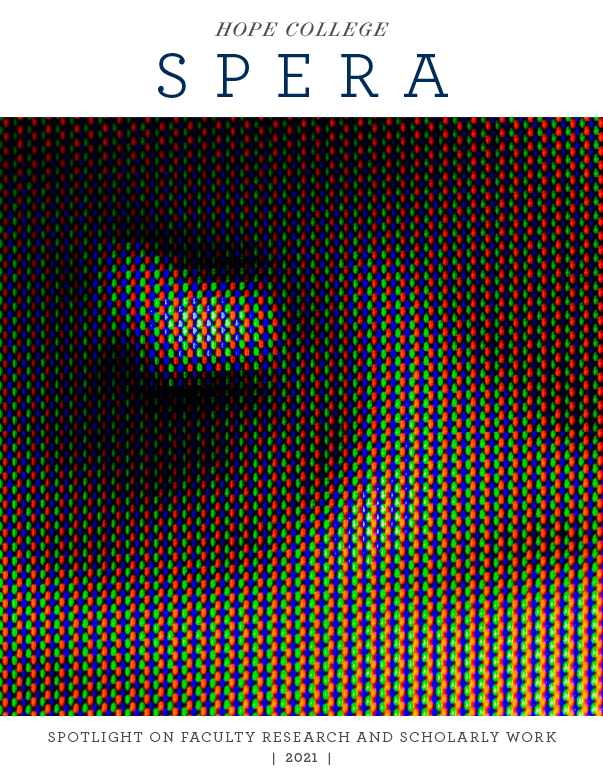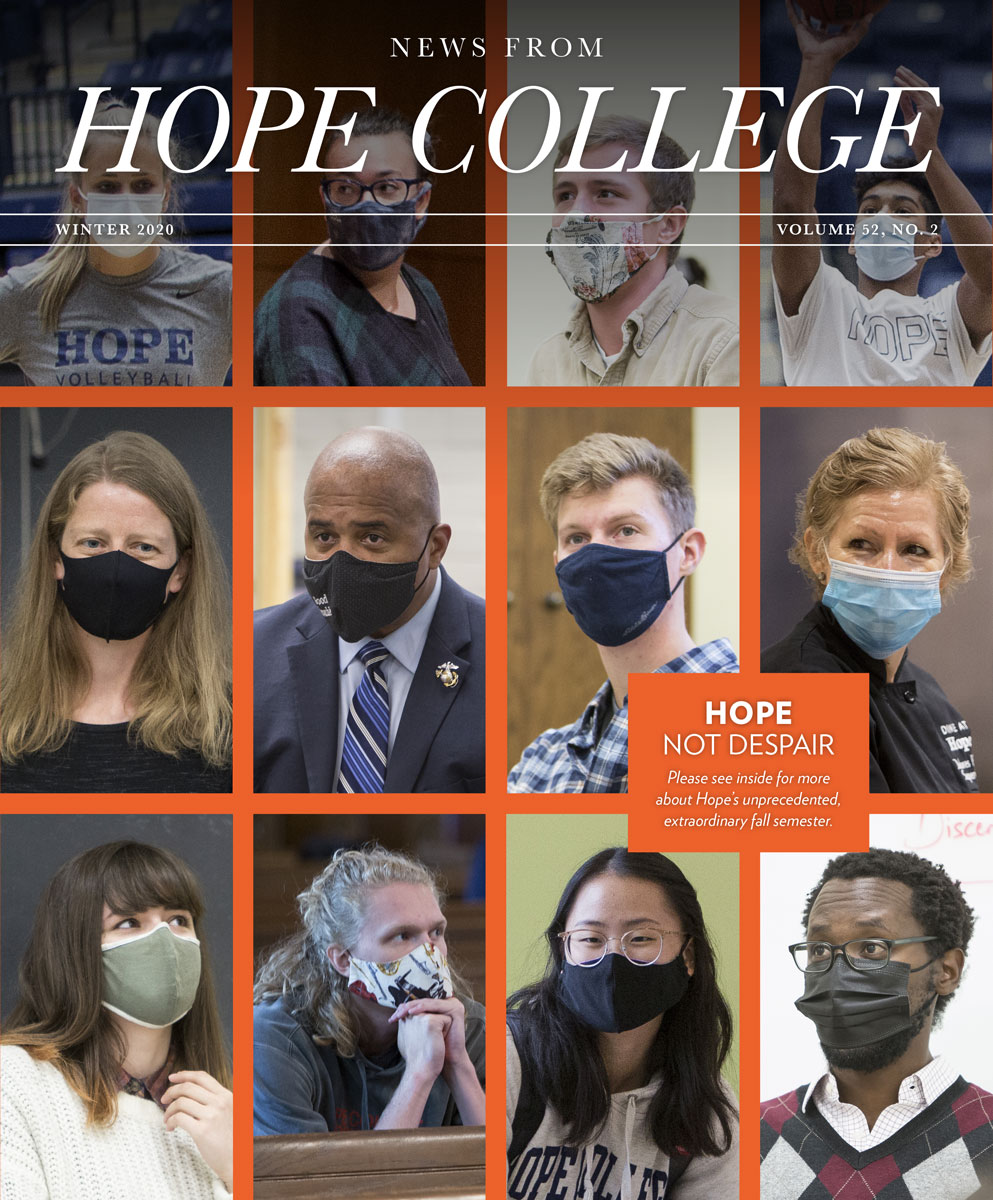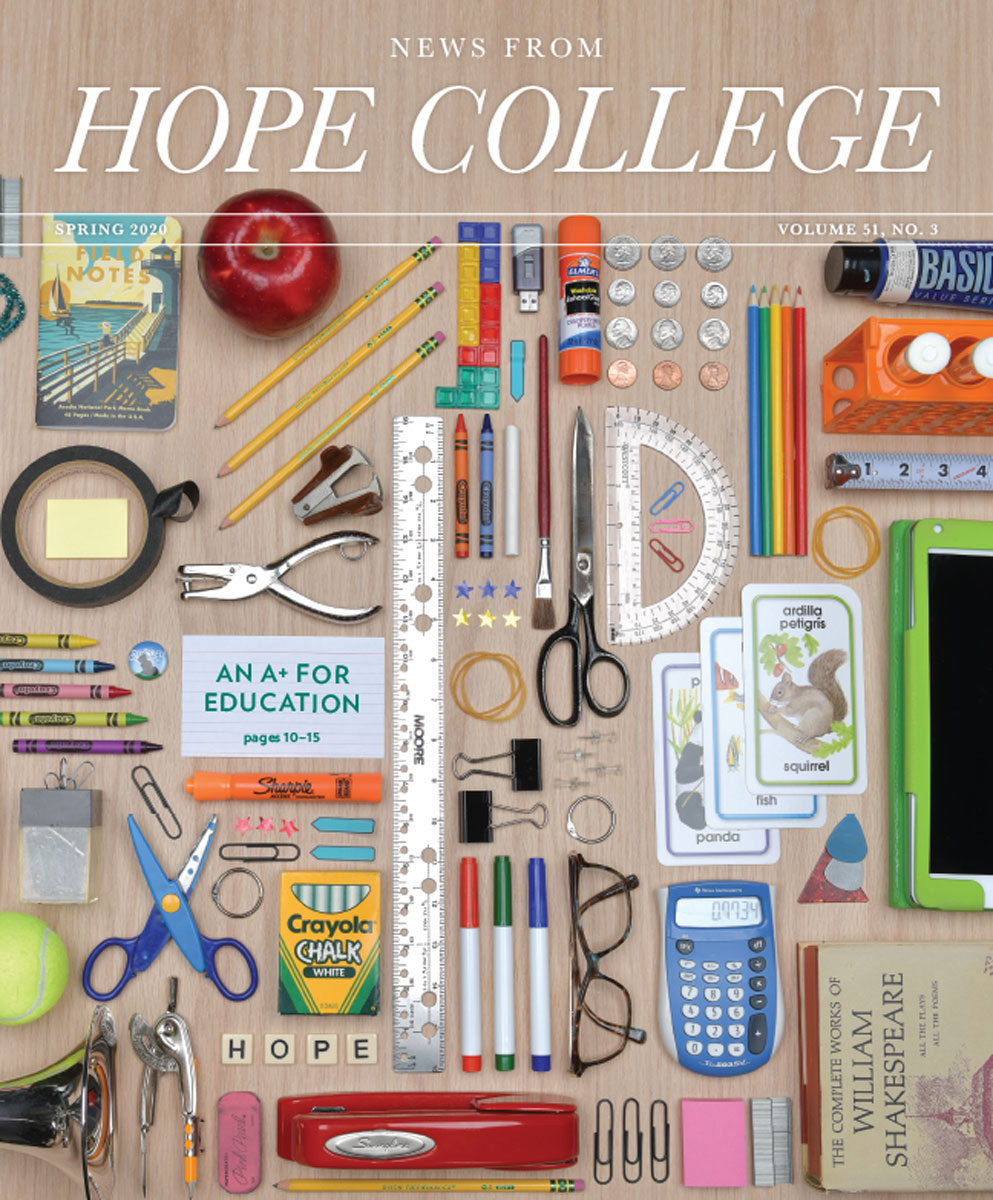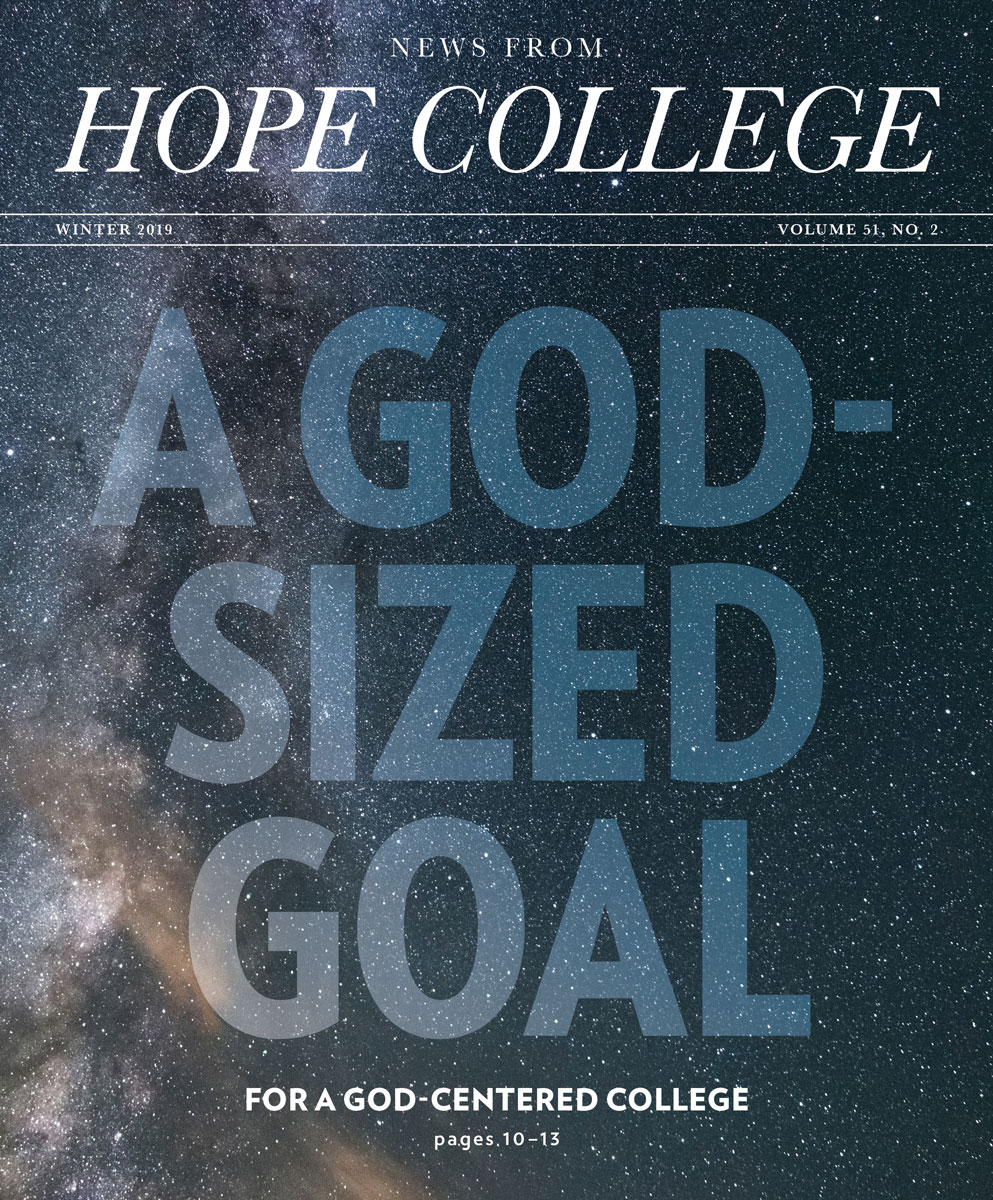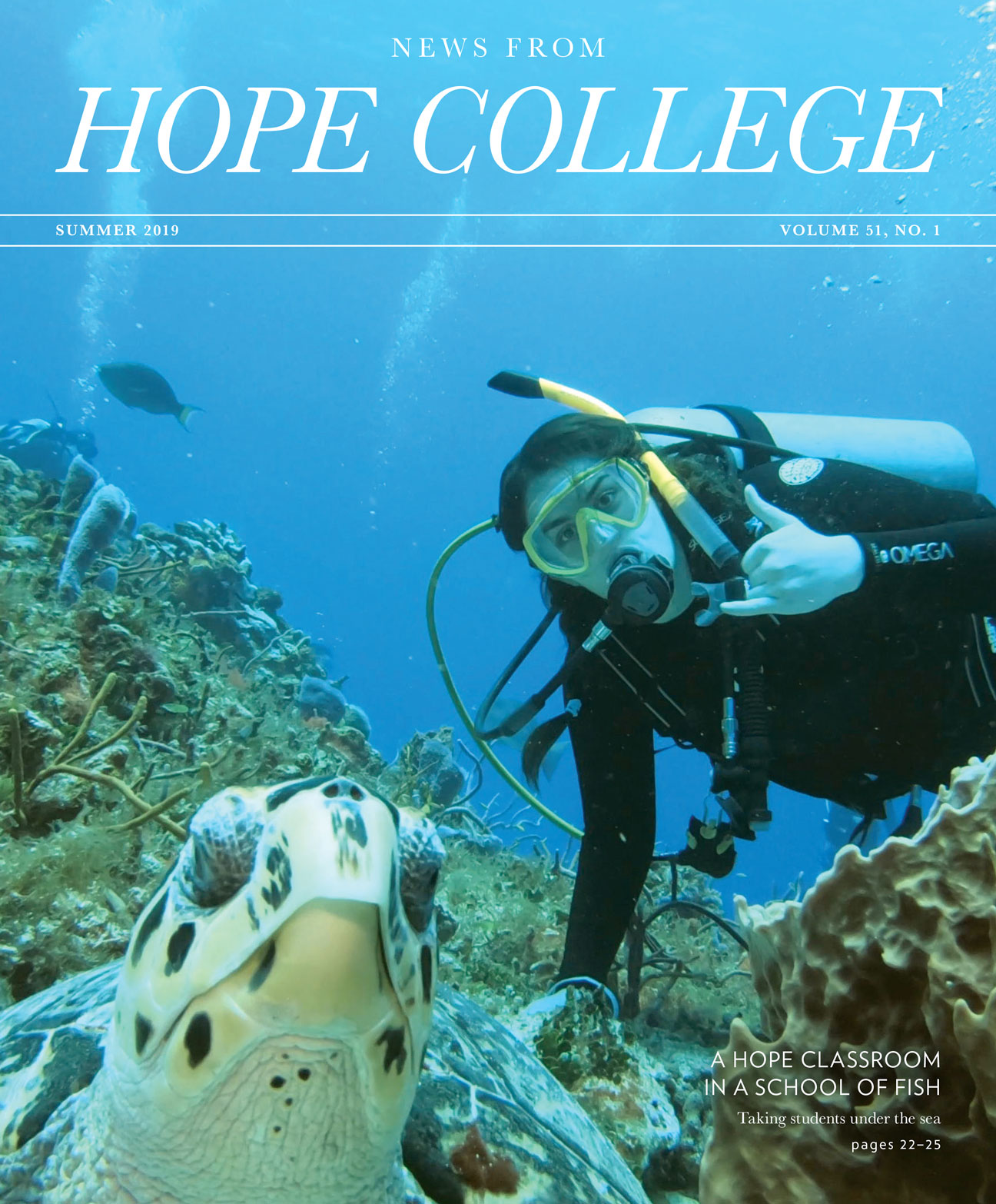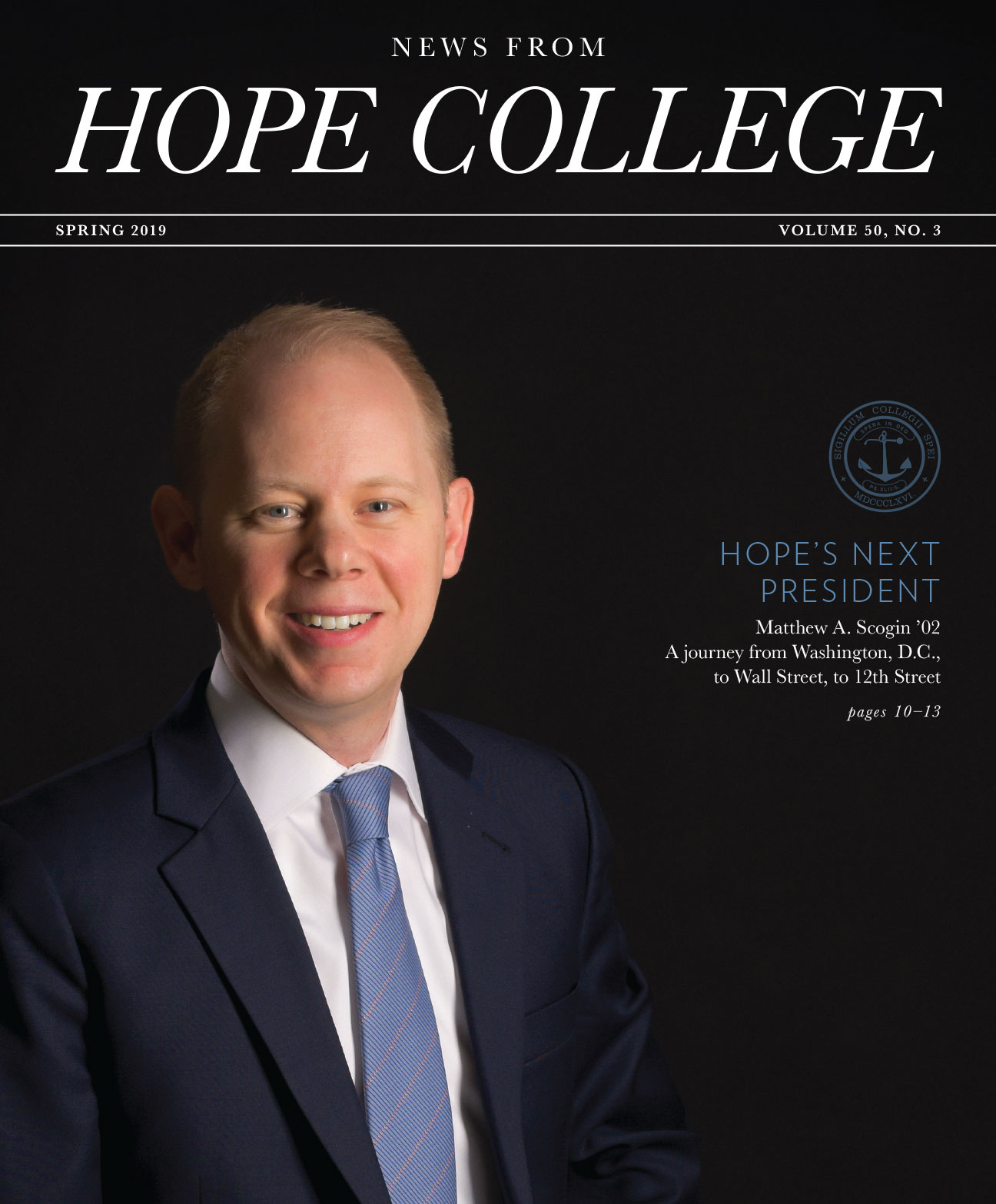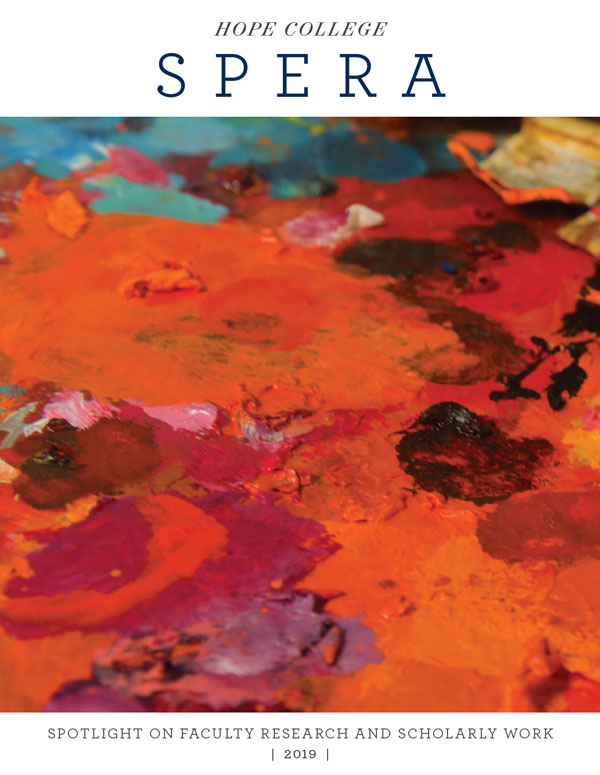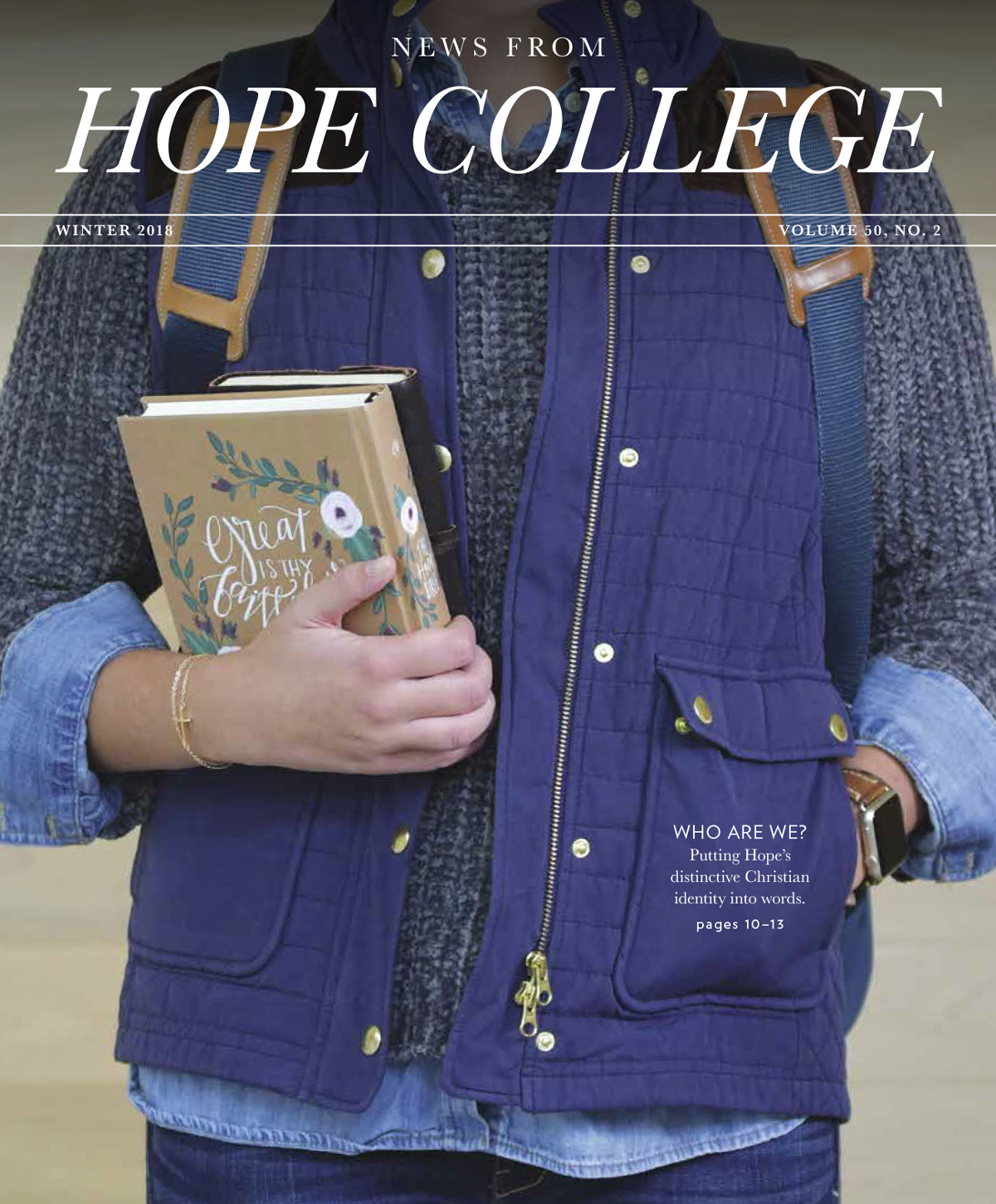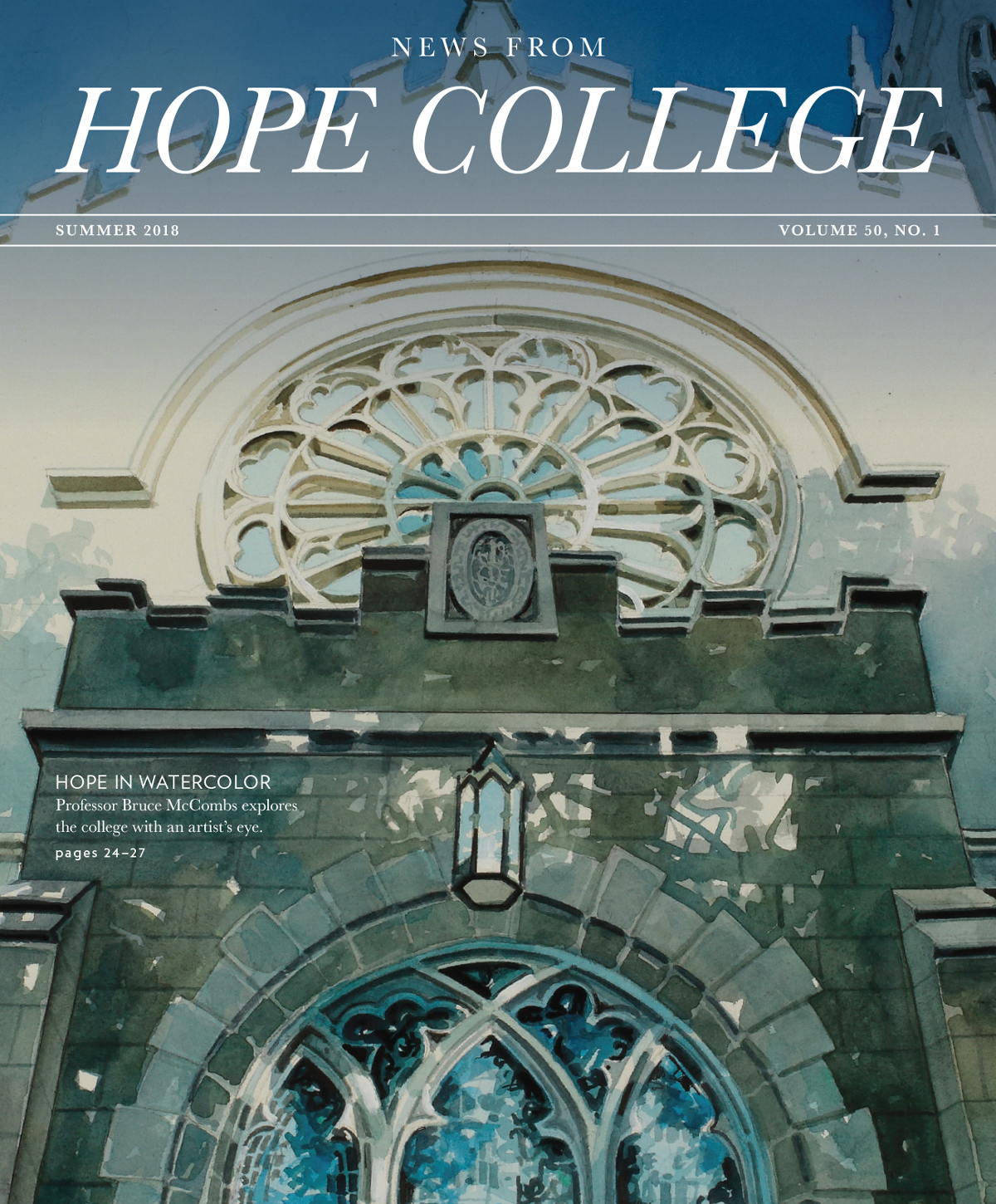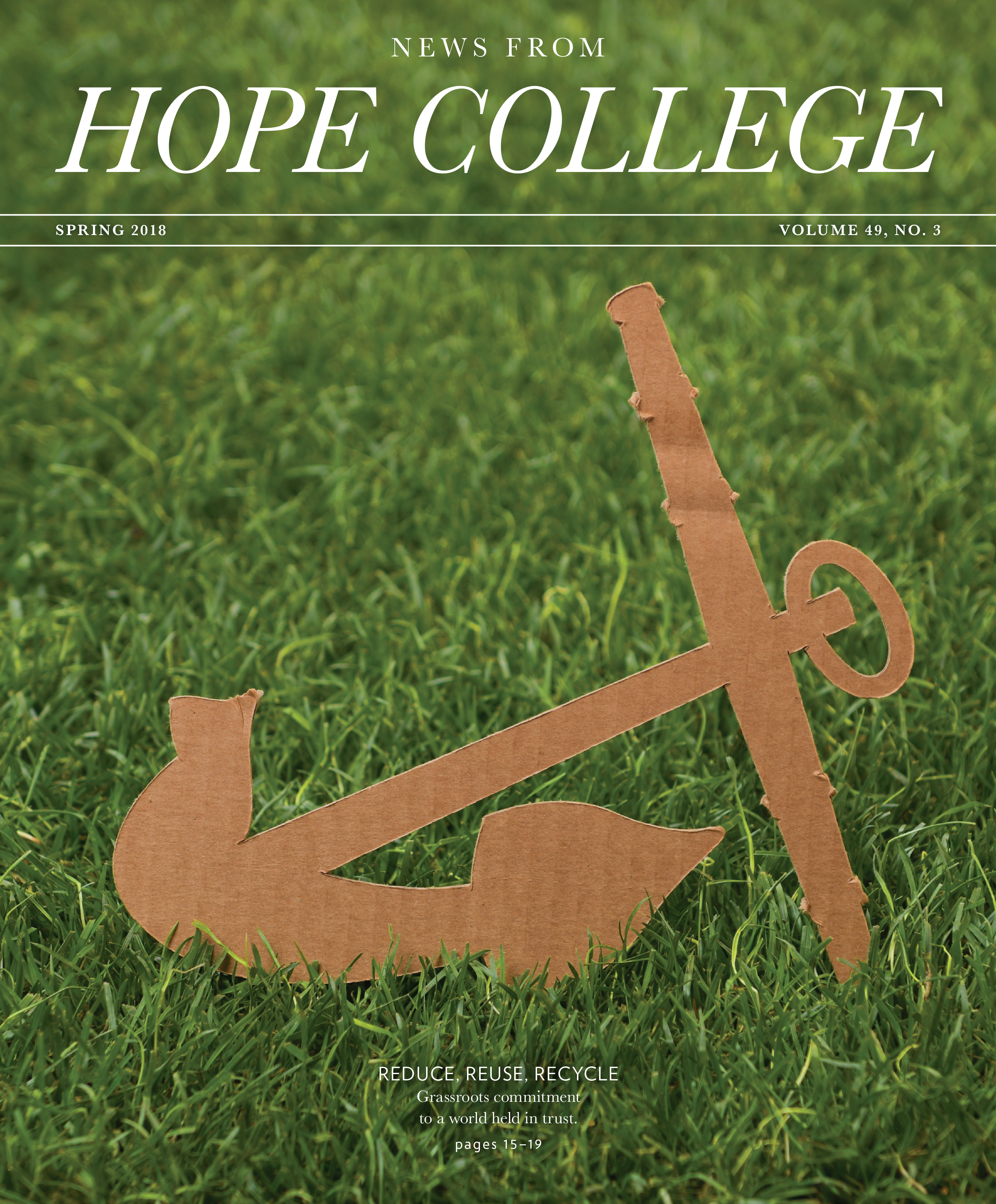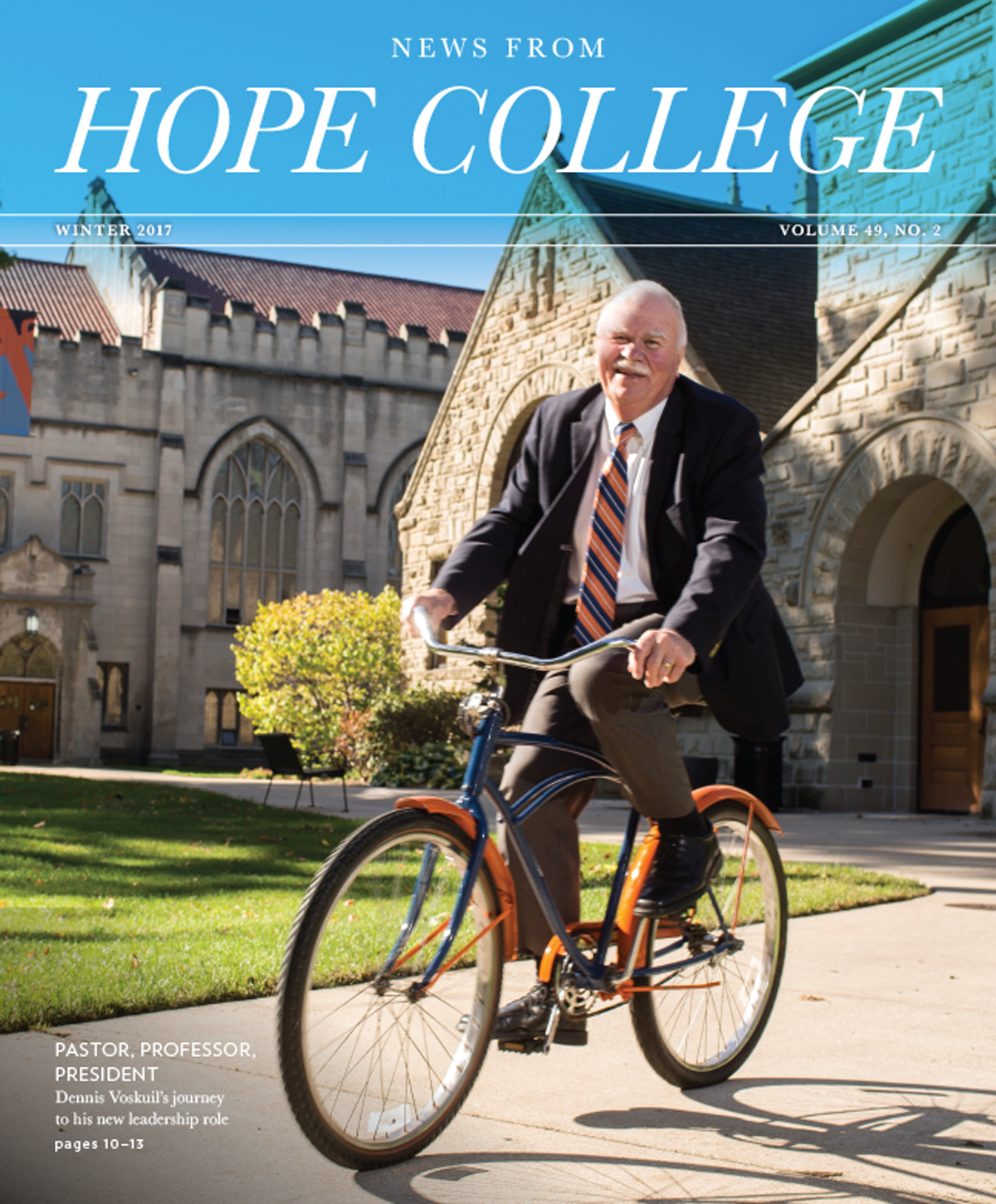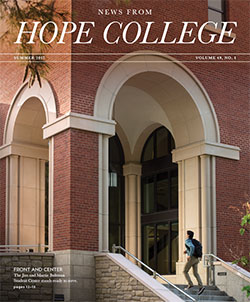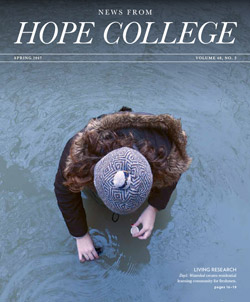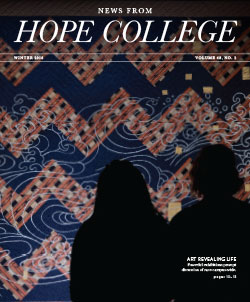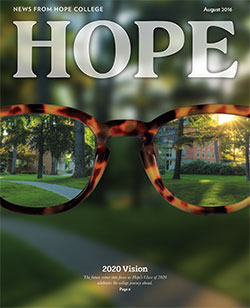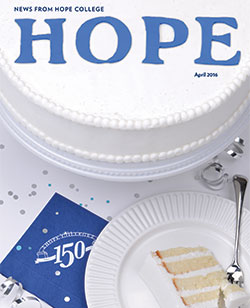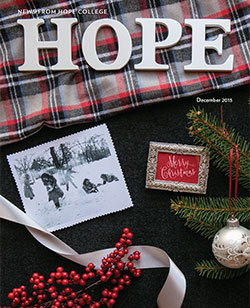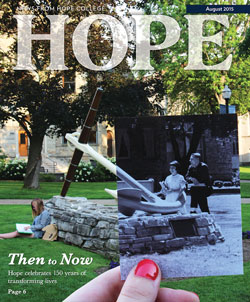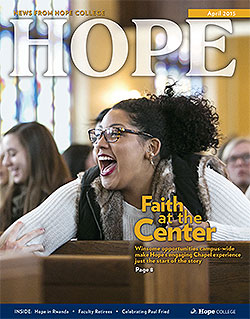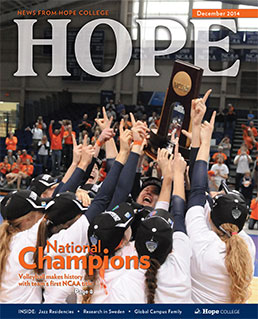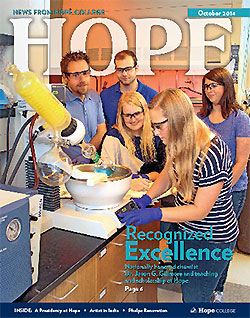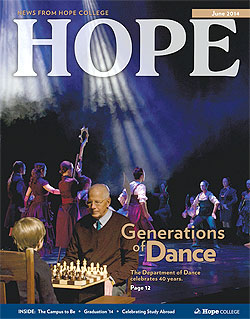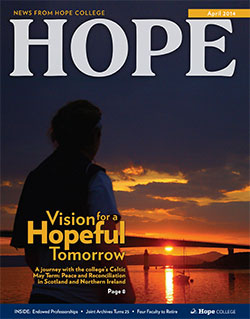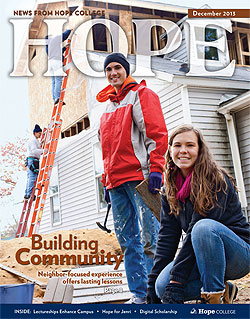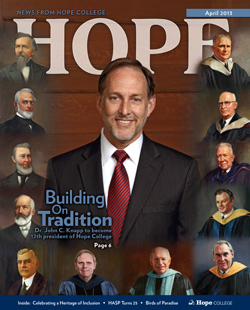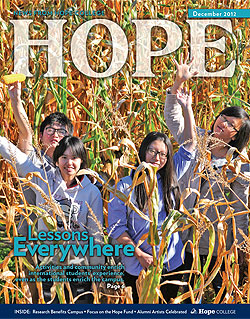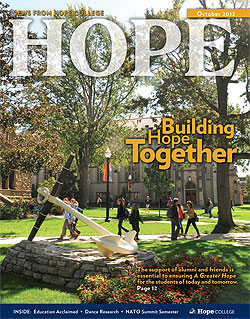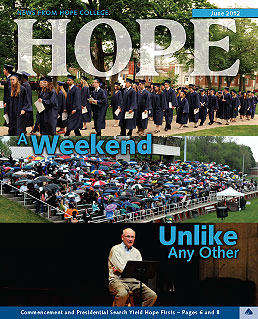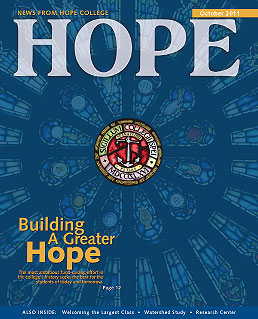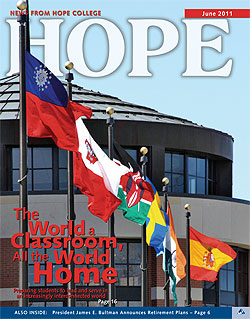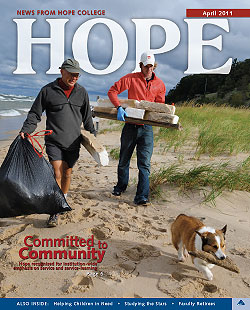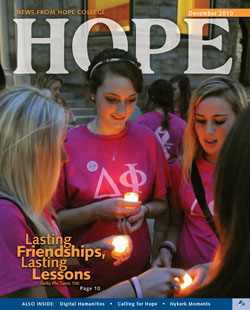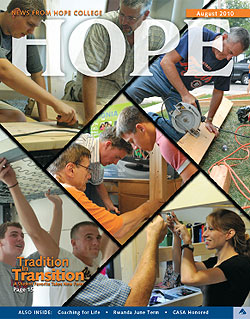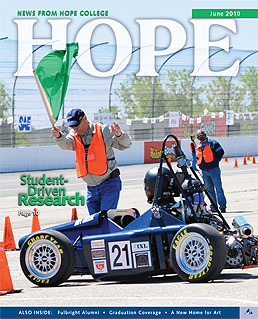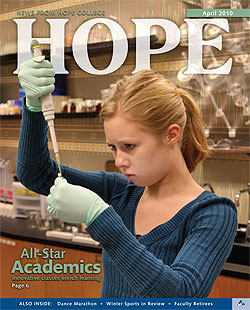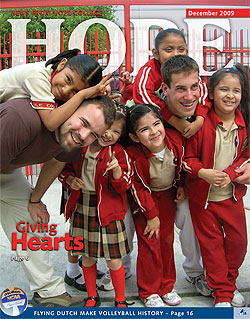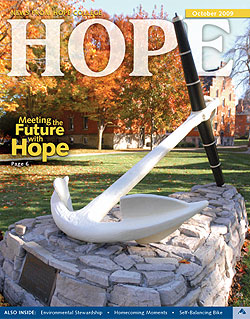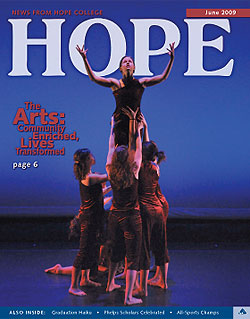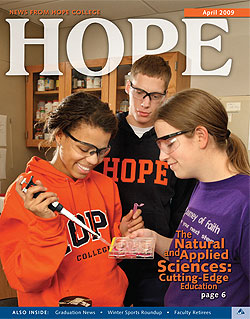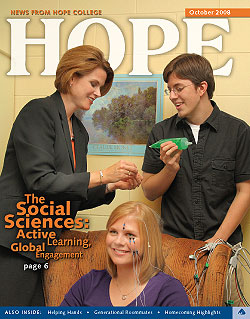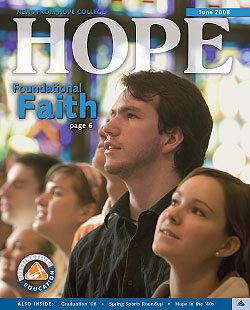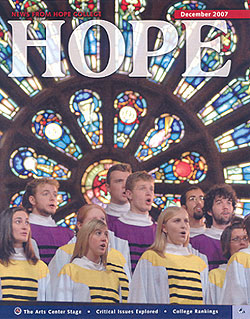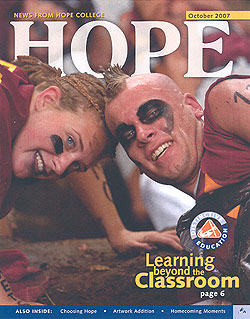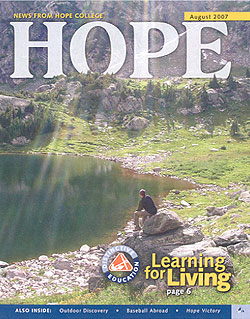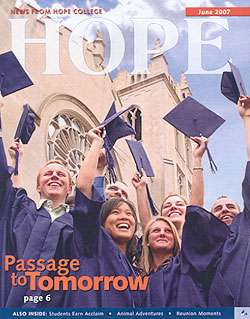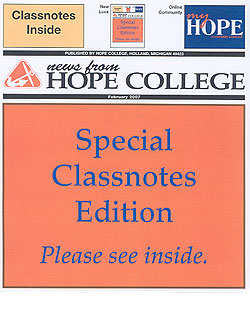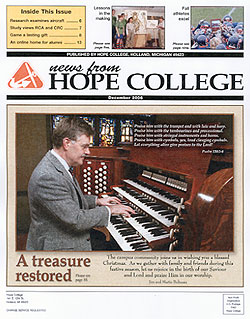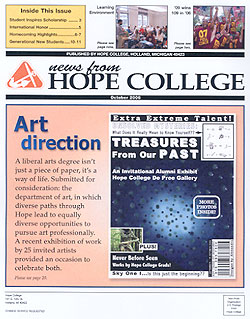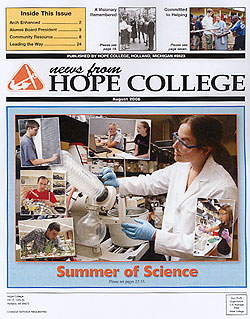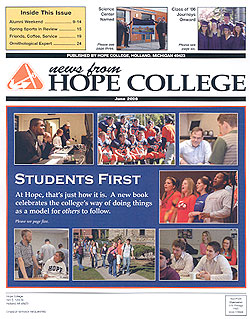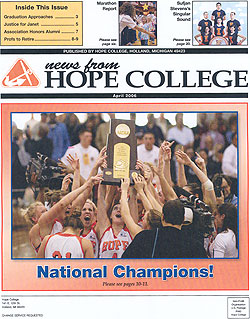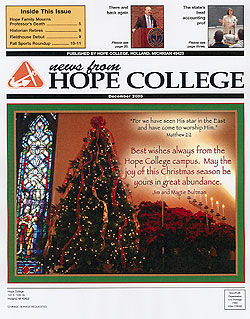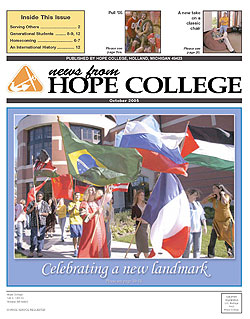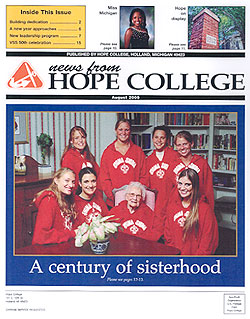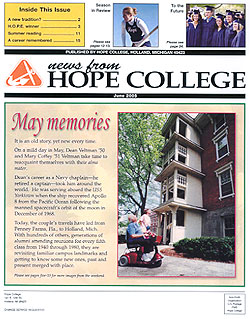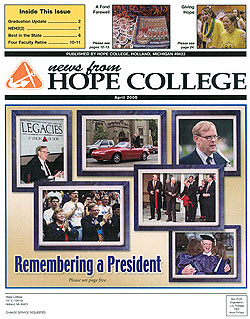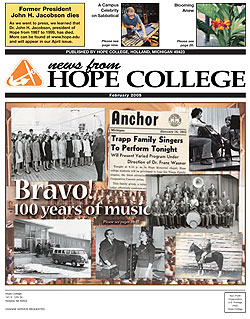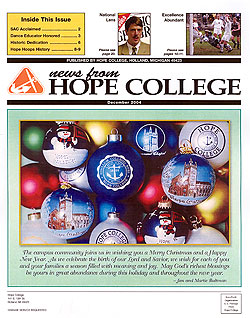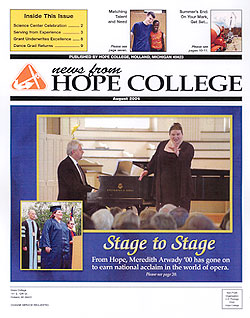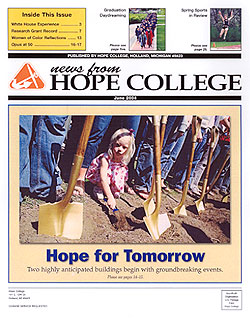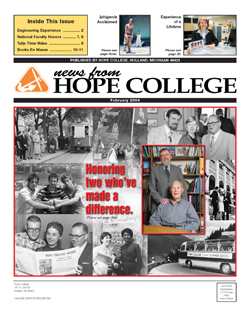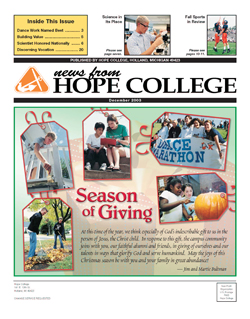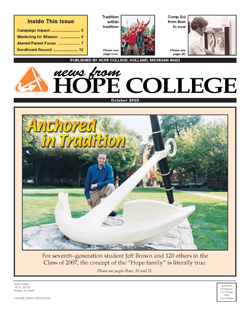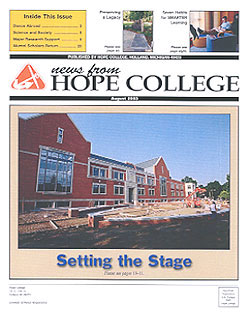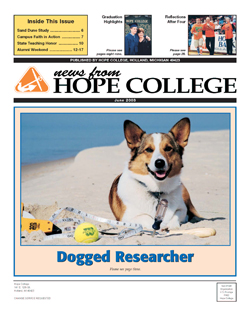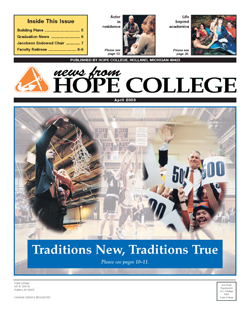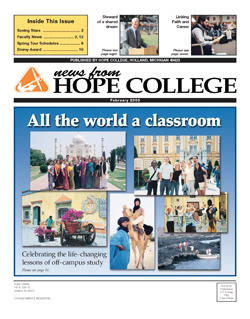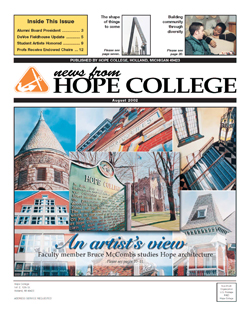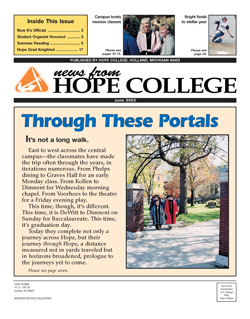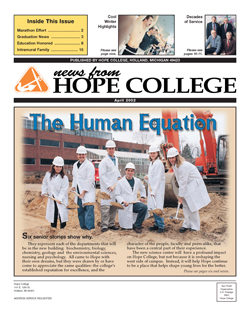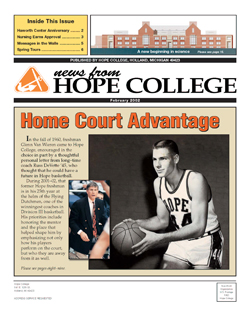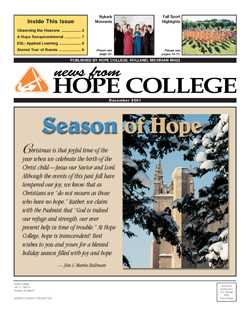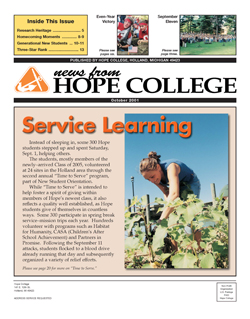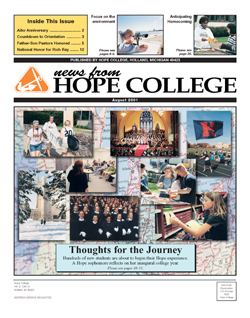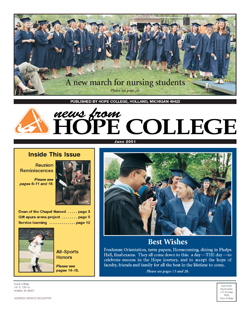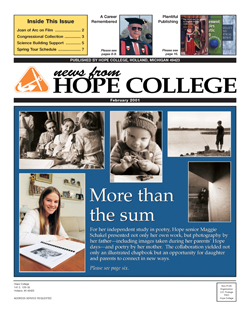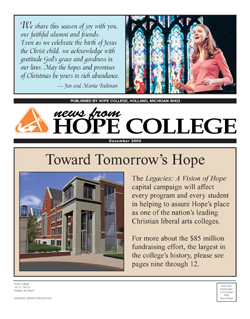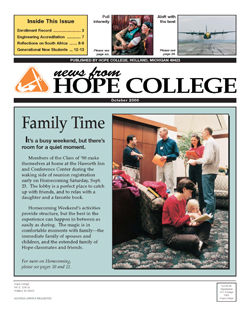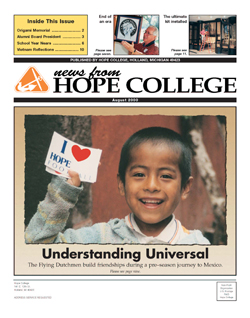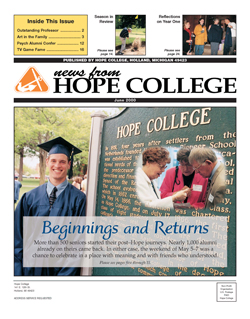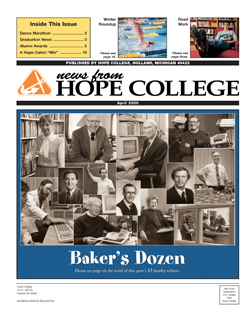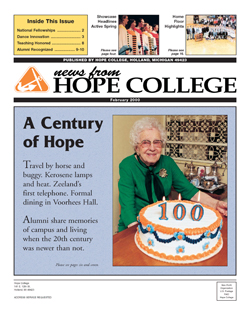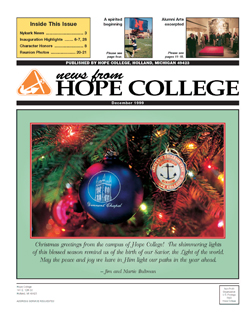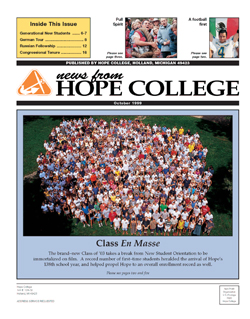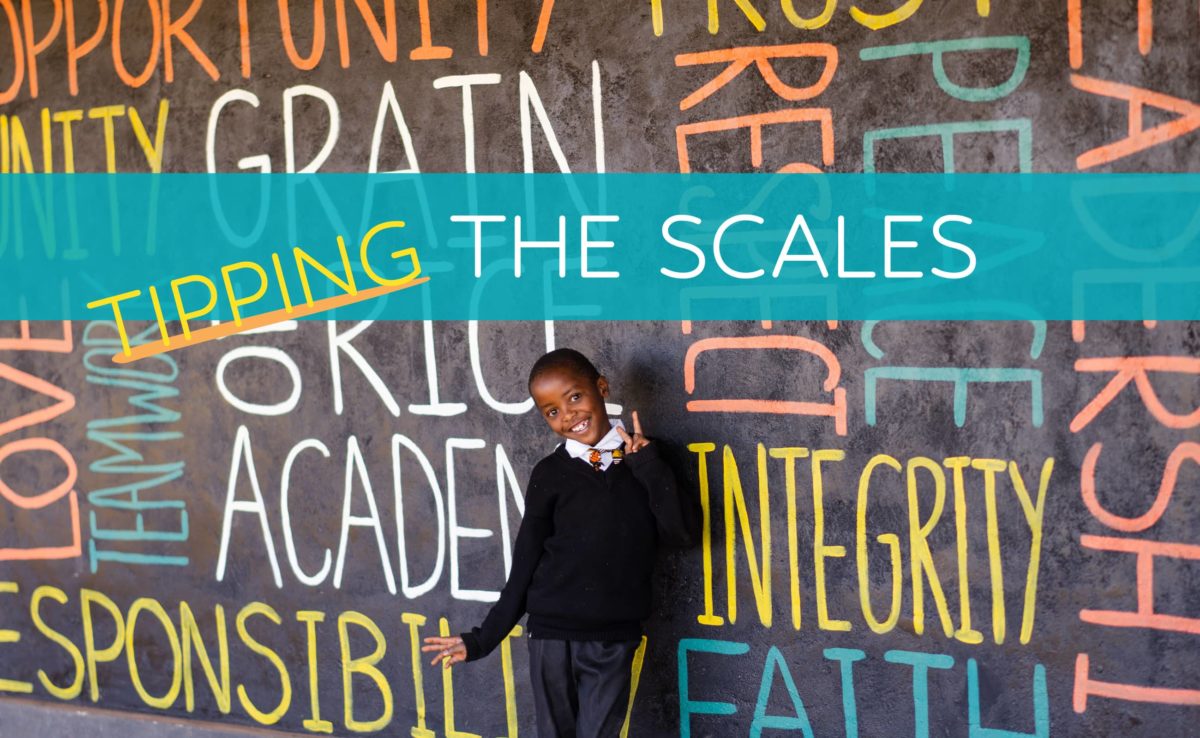Tipping the Scales
A single grain of rice is almost inconsequential, measuring about a quarter-of-an-inch long and weighing 1/64 of a gram. But as one Hope alumna discovered, one grain of rice can tip the scale and make all the difference.
Amy Back ’06 Ahiga, relying on her faith and the idea that doing something small can have a great impact in the fight against poverty in Kenya, launched Grain of Rice Project in 2013, a non-profit organization that “empowers Kenyans through education and training initiatives in Jesus’ name.”
“When you see poverty on a massive scale, your life will never be the same,” Ahiga said, referring to her experience in Kibera, a densely populated informal urban settlement near Nairobi. “I knew I could not meet every need. But I could take advantage of small opportunities to help, giving people a grain of hope.”
Ahiga came to appreciate the importance of that grain of hope during her first trip to Africa in 2008. She taught art for two years after graduation from Hope before going to Kenya to live with a family for eight months.
While there, she built relationships with three talented Kenyan women who needed a way to support their families. Beginning in the living room of a humble home on her next trip to Kenya, she assisted them in using their skills to handcraft appealing items by repurposing discarded materials they found around Kibera. Lacking a market and any chance of reaching one, Ahiga realized that she could help in a simple way: by packing their creations in her suitcases and selling them when she was back in the United States.
Upon returning home in 2009, she settled in Valparaiso, Indiana, where she taught in a rural elementary school for eight years. Every summer, she returned to Africa and eventually quit her teaching job in 2017 to run Grain of Rice Project full time before moving to Kenya in 2020.
“My education at Hope was a springboard for everything I have been able to do… Having a liberal arts background and studying in so many subjects makes you well-rounded.”
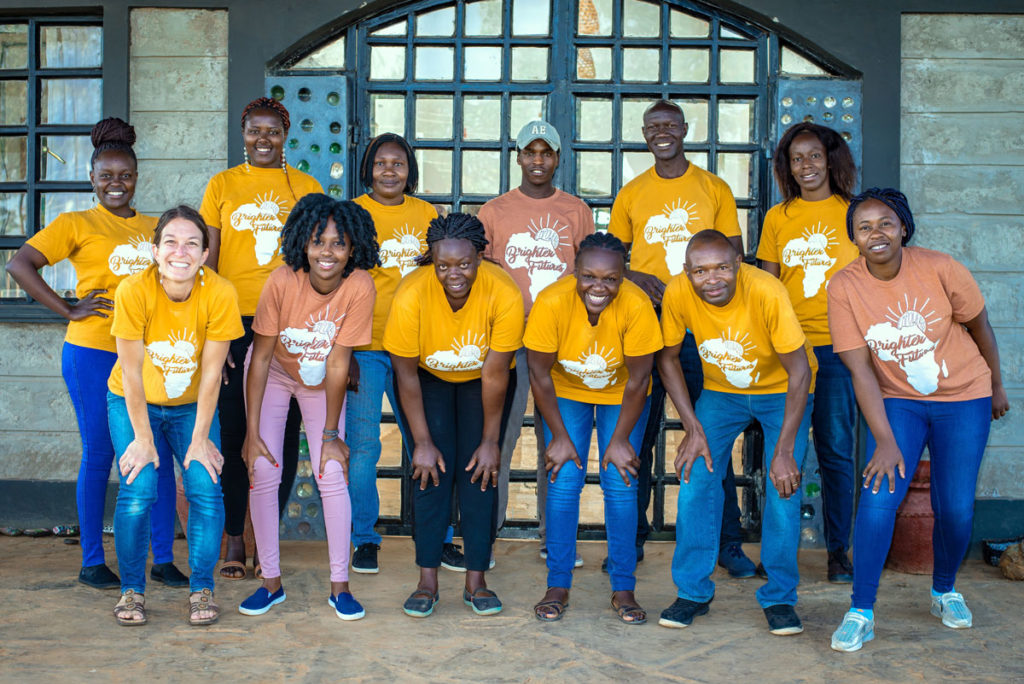
People end up in Kibera settlement, Ahiga explained, because they come to Nairobi looking for opportunities to better their lives but don’t find any. About 235,000 people live in the one-square-mile area in small dwellings they construct themselves with materials they can find at hand, such as scrap wood and leftover corrugated tin. With no indoor plumbing, residents share a hole in the ground for a bathroom, usually one for every 50 dwellings.
Seeing children living in these conditions also tugged at Ahiga’s heart. Using her degree as a visual arts education major at Hope, she started a children’s program to provide a safe place for children to go after school and basic literacy instruction for those who could not afford an education.
“I’ll always kinda be an outsider,” Ahiga said. “It’s local people who can have the most impact. They are the ones to bring change.”
Her small efforts to equip people with vocational skills and start a children’s program in Kibera have rippled out to touch hundreds of lives. The Grain of Rice Project now includes an artisan program to help people make a living by selling their handmade fair trade products through a website. And the children’s program has expanded into Grain of Rice Academy, a primary school Ahiga constructed and opened in 2021. Current enrollment is 130 students.
The school’s mission reflects the mission Hope College instilled in Ahiga during her time on campus: “We strive to be a school that nurtures creative, critical thinkers and provides a high quality, cross-curricular education in an equitable environment for all students. No matter their background, we will support all students within a Christian context to establish them as future leaders and global citizens.”
“It might sound cheesy, but Hope students are inspired to change the world,” Ahiga said. “I can’t change all of Kenya, I can do small things to empower people that will add up to make a big difference in their lives and spill over to make a difference in the lives of others around them.”
Ahiga first became interested in serving others through a service project offered on campus her freshman year. She was also inspired by her roommate Heather Amundson ’06 Lobejko who made a trip to Cameroon, Africa, with the first Hope Engineers Without Borders team. Lobejko along with alumna Anna Marshall ’07 Kalmbacher, both nursing majors, collected baseline community health data for the engineering students’ clean water project. Hearing about their experiences gave Ahiga a burning desire to go to Africa one day, she said.
“My education at Hope was a springboard for everything I have been able to do” in Kenya, Ahiga said. “Having a liberal arts background and studying in so many subjects makes you well-rounded.”
Ahiga credits her Earth and Ethics class with Dr. Steven Bouma-Prediger ’79 for changing her view of creation care and equipping her to promote green initiatives such as composting, recycling and sustainability. Her teaching and art background have helped her develop a hands-on, literacy-based curriculum infused with STEM (science, technology, engineering and mathematics) and the arts for the Grain of Rice Academy.
“It’s the right of every child around the world to get a quality education wherever they come from that teaches kids to think, not just memorize, as is often the case in Kenya,” Ahiga said.
Ahiga has a 4-year-old son, Ellis, who attends the Grain of Rice Academy. The academy is located in a small village outside Nanyuki, about 4.5 hours from Nairobi. Grain of Rice Project moved to the village because they had outgrown their place near Kibera and they wanted to be in an area where people are often unreached with opportunities.
Ahiga said she took a giant step of faith to purchase the land, relocate the artisan training program and start building the school in 2020 because Grain of Rice Project mostly relies on outside funding, and land in Kenya is expensive. But God provided all that was needed, she said.
Many of the artisans from Kibera have relocated to Nanyuki, and many of the students from Kibera board at the school, returning home during breaks. The new site also includes sustainably farmed vegetable gardens, staff and volunteer housing, and a bunkhouse for students.
Grain of Rice Child Advocate donors provide the funding for most of the students. Donor advocates are presented to the students, who choose whom they want to sponsor them. Ahiga said it is important for them to be empowered to make choices. More than 40 students are waiting for an advocate to support their education, so this is currently one of the academy’s greatest needs.
Eventually, Ahiga plans to continue adding classrooms to the school as funding becomes available so it can accommodate students from preschool through ninth grade. She also recently added a counselor to the staff because so many children come from backgrounds with trauma, and it hampers their ability to learn.
“I want to love on kids and help them to see that they have a purpose beyond trying to survive every day,” Ahiga said. “You have gifts and abilities no matter where you come from. Your circumstances shouldn’t limit you.”
Learn more about the Grain of Rice Academy and see beautiful handcrafted fair trade items made by the artisans for purchase at grainofriceproject.org
